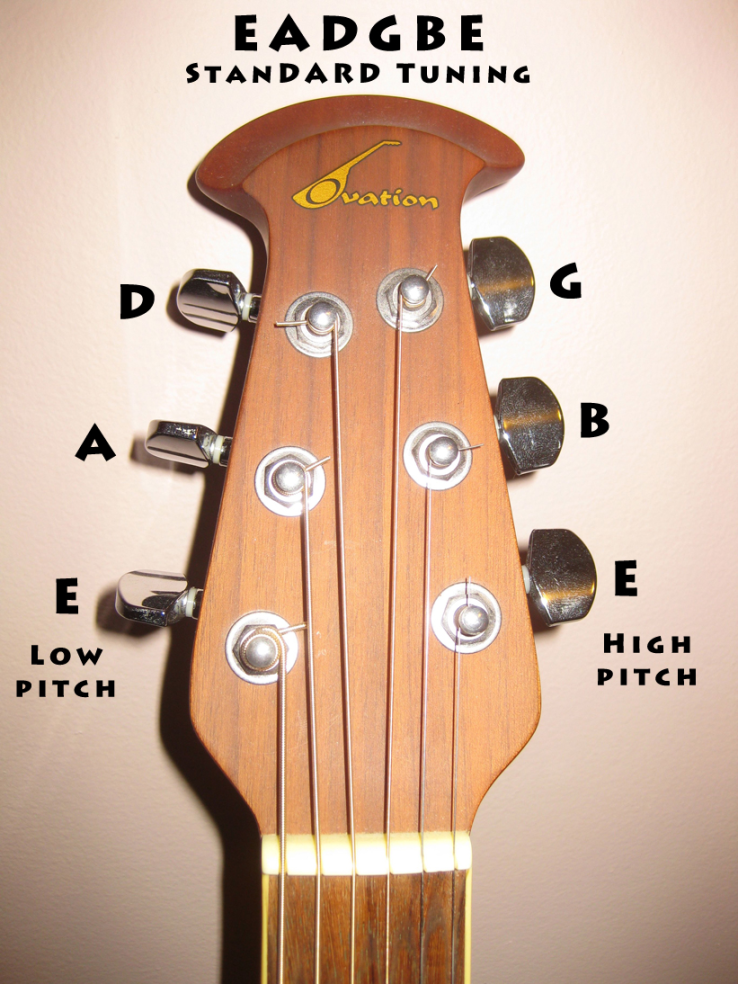How To Tune Your Guitar: A No-Stress Guide
Getting your guitar to sound just right can feel like wrestling a wild beast sometimes, especially when you’re just starting out. But don’t worry, it’s a skill you’ll pick up quickly, and this guide is here to make it as painless as possible. We’re going to break down the basics of guitar tuning, talk about the different methods, and give you some tips to keep your guitar sounding sweet.
Understanding the Strings and Standard Tuning
First things first, let’s talk about the strings. Your guitar has six strings, and they’re numbered from thinnest to thickest. The thinnest string, at the bottom when you’re holding your guitar normally, is the 1st string. The thickest, at the top, is the 6th string.

Now, for standard tuning, which is what most folks use, the strings are tuned to these notes:
6th String: E (the lowest E)
You can remember this with mnemonics like “Every Amateur Does Get Better Eventually” or “Eddie Ate Dynamite, Good Bye Eddie.” Pick whichever one sticks in your head!
Tuning Methods: Your Options
You’ve got a few different ways to get your guitar in tune. Let’s look at the most common ones:
Using an Electronic Tuner
This is by far the easiest and most accurate method. Electronic tuners come in all shapes and sizes. Some are clip-on tuners that attach to your guitar’s headstock, while others are handheld or pedal tuners. They work by detecting the pitch of each string and showing you whether it’s sharp (too high) or flat (too low).
How to use a clip-on tuner:
1. Clip the tuner onto the headstock of your guitar.
2. Pluck the 6th string (the thickest one).
3. The tuner will display the note it’s detecting. If it’s not E, turn the tuning peg for that string until the tuner indicates E.
4. Repeat this process for each string, checking the tuner for A, D, G, B, and E in that order.
Tuning by Ear
Tuning by ear takes a bit more practice, but it’s a valuable skill to develop. You can use a reference pitch, like a piano or a tuning fork, or even a pre-recorded audio file.
How to start tuning by ear:
1. Use a reference pitch for the E string. Many free online sources provide this.
2. Pluck the 6th string and compare it to the reference.
3. Adjust the tuning peg until the string matches the pitch.
4. For the other strings, you can tune them relative to each other. For example, to tune the 5th string (A), fret the 6th string at the 5th fret. It should sound the same as the open 5th string.
5. Continue this method for the other strings, using the following relationships:
Using a Smartphone App
There are tons of guitar tuning apps available for smartphones. They work similarly to electronic tuners, using your phone’s microphone to detect the pitch of your strings.
How to use a smartphone app:
1. Download a guitar tuning app from your app store.
2. Open the app and select standard tuning.
3. Pluck a string, and the app will show you if it’s sharp or flat.
4. Adjust the tuning peg until the app indicates the correct note.
5. Repeat for all strings.
Tips and Tricks for Staying in Tune
Stretch your strings: New strings tend to go out of tune quickly. After you put on new strings, gently stretch them by pulling on them slightly.
Conclusion
Tuning your guitar is a fundamental skill that every guitarist needs to master. While it might seem daunting at first, with a little practice, it’ll become second nature. Whether you opt for an electronic tuner, rely on your ear, or use a smartphone app, the key is to be patient and consistent. Regularly checking and adjusting your tuning will not only improve your playing experience but also help you develop a better ear for music. Remember to stretch your strings, tune frequently, and pay attention to intonation to keep your guitar sounding its best. With these tips and tricks, you’ll be well on your way to playing in perfect harmony.

